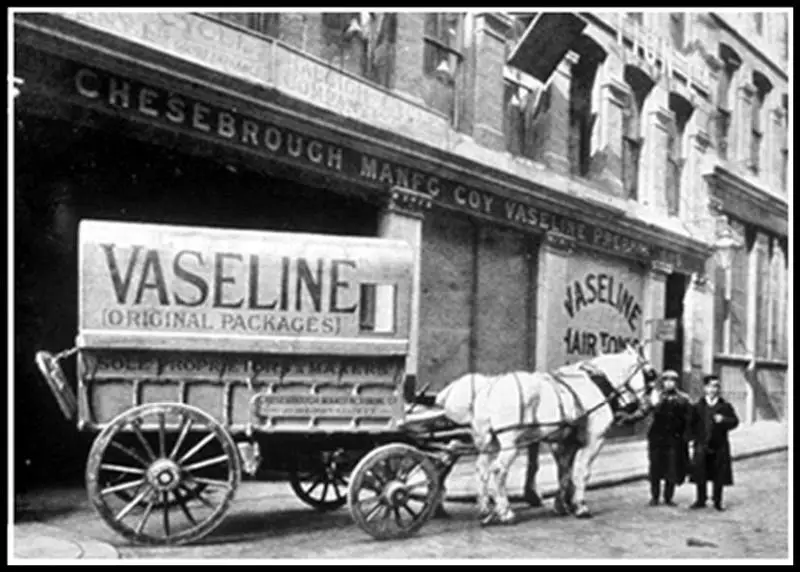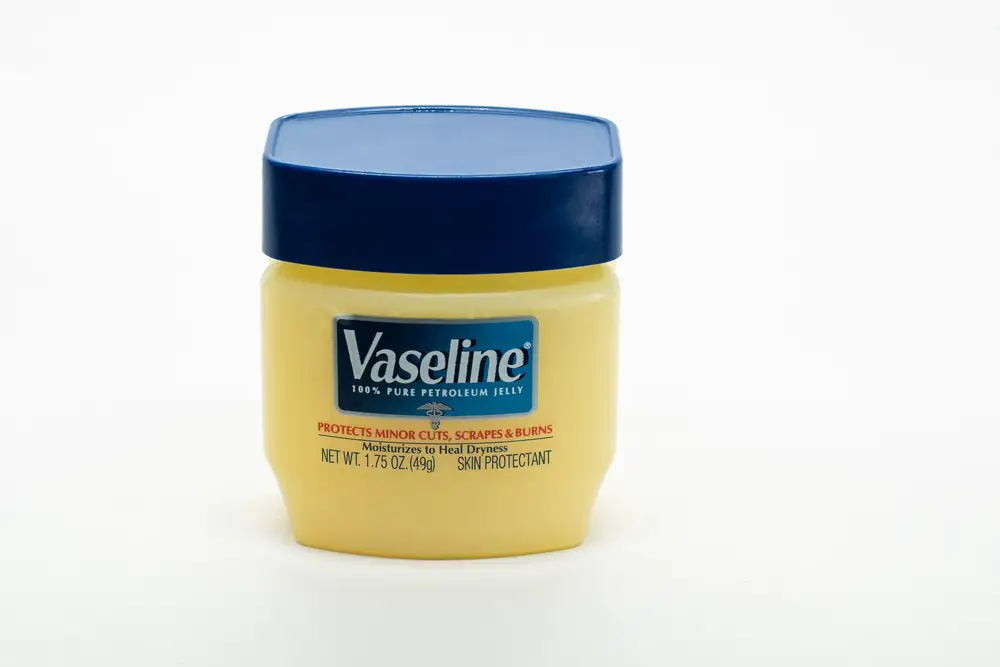Vaseline, or petroleum jelly, is used for just about everything. Chances are you have a jar of the stuff sitting in your medicine cabinet or drawer somewhere in your home. A plucky inventor saw the potential of the substance back when it was being discarded as a byproduct of oil production.
On a cold, dry night, you may have reached for a jar of Vaseline to take care of the nuisance of chapped lips. But when you slathered the Vaseline on, did you ever wonder what the stuff was, exactly? If you peel off the label and read the ingredients, there is usually only one listed under the drug facts — 100% White PetrolatumUSP. What is that, where did it come from, and why does this particular thing work so well? The answers to those questions are rather interesting.
Robert Chesebrough had something happen to him that none of us would want — his job became obsolete. Chesebrough was a chemist, and his job consisted of clarifying kerosene from the oil of sperm whales. But his job came to an end when oil was discovered in Titusville, Pennsylvania. He didn’t let his new-found unemployment get him down, however, and he decided to travel to Titusville to figure out what new products could be made from the black stuff coming out of the ground.

In 1859, while in the oil fields of Titusville, Chesebrough discovered something interesting. The oil workers there were using a substance to heal their cuts and burns. It was a residue that was removed from oil rig pumps called rod wax. The rod wax was a nuisance to workers because it caused their equipment to malfunction.
Chesebrough saw an opportunity and began to collect the black, waxy substance. He returned to Brooklyn, New York, and began the tedious process of refining the substance over a five year period. He discovered that by distilling the thinner, lighter oils from the rod wax, he could produce a light-colored gel, and he patented the process in 1865.
Chesebrough spent another ten years perfecting the purification of his product. He began to demonstrate its uses around New York by burning his skin with acid or on an open flame and then using the product on his self-inflicted injuries.
By 1870, Chesebrough had opened his first factory, and in 1872, he named his product Vaseline. The name was a mix of the German word for water, wasser, and the Greek word for oil, oleon, with the change to a scientific-sounding ending of –ine. Two years later, it was selling across the United States.
Production of Vaseline was eventually moved to Perth Amboy, New Jersey, and to factories in Canada, Europe, and Africa. Chesebrough stayed as president of the company until 1908. In 1955, the Chesebrough Manufacturing Company merged with Pond’s Extract Company to become Chesebrough-Ponds, Inc., and in 1987, this company was purchased by Unilever.
Petroleum jelly is a mix of hydrocarbons and is flammable only when it’s heated to a liquid. Its water-repelling properties make it very effective in sealing what it’s put over (such as chapped lips, cuts, or burns) as well as keeping moisture in. The whiter the jelly, the more it has been refined. The USP after the White Petrolatum stands for United States Pharmacopeia, a compendium of drug information and standards, and the 100% indicates the grade given to the substance.
Now that you know what it is, what else can it be used for? Chesebrough was such a firm believer in the stuff that he claimed to eat a spoonful every day. He died in 1933 at the age of 96. Maybe we won’t go that far, but it does have an endless reported supply of uses. Here are just a few.
1. Shine patent-leather shoes
2. Take out lipstick stains — put a little on the stain and wash whatever it was on.
3. Get chewing gum off wood or any other surface — dab a little until the gum disintegrates.
4. Restore old leather
5. Lubricate rusty hinges or machinery, zippers, etc
6. Rub on chicken combs to prevent frostbite
7. Stop fungal growth on turtle shells (We all have that problem)
8. Use it on car battery terminals to prevent corrosion
9. Moisturize the paws of dogs
10. Use it to control split ends
Those are just a few of the uses. You may not have a turtle or a chicken to try it on, but I’m sure you could find something.
Sources: AOGHS, Unilever, Paraffin Wax Co, Chem Europe



